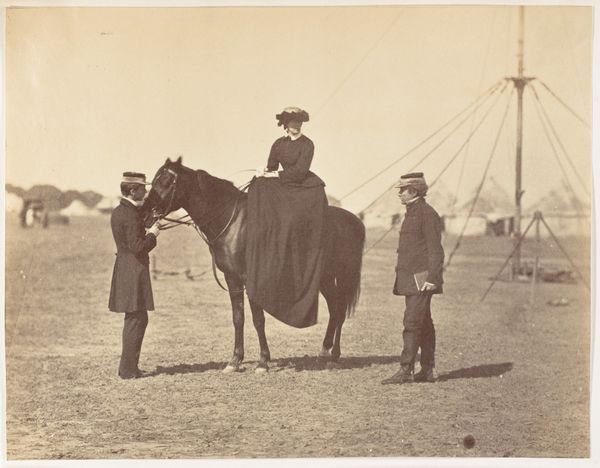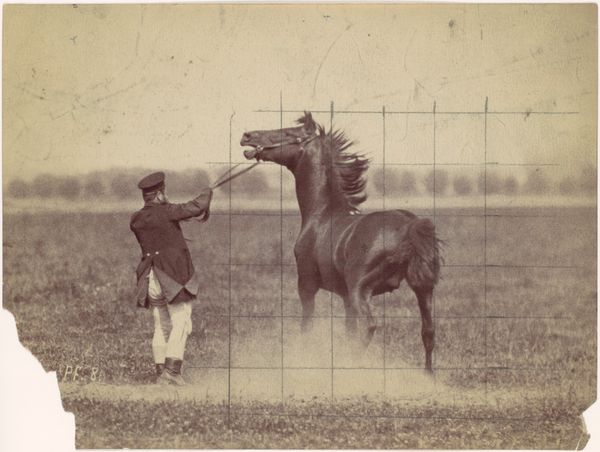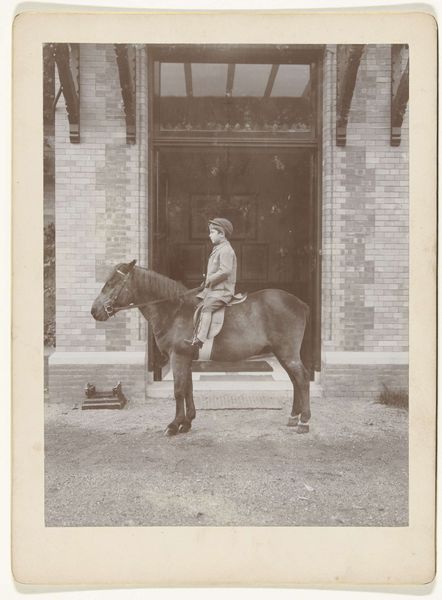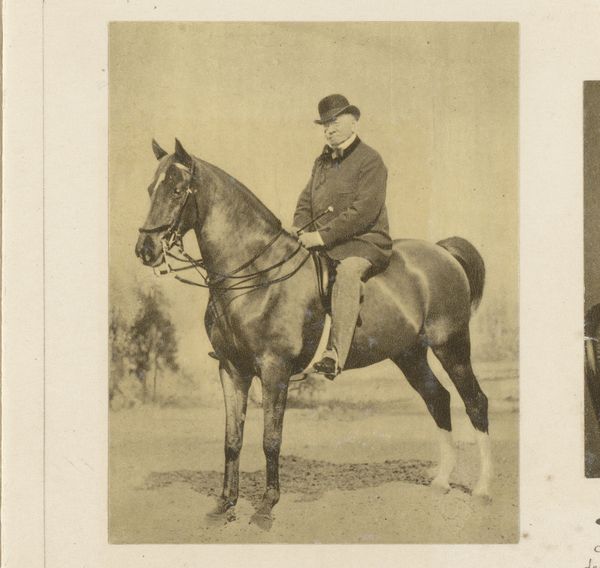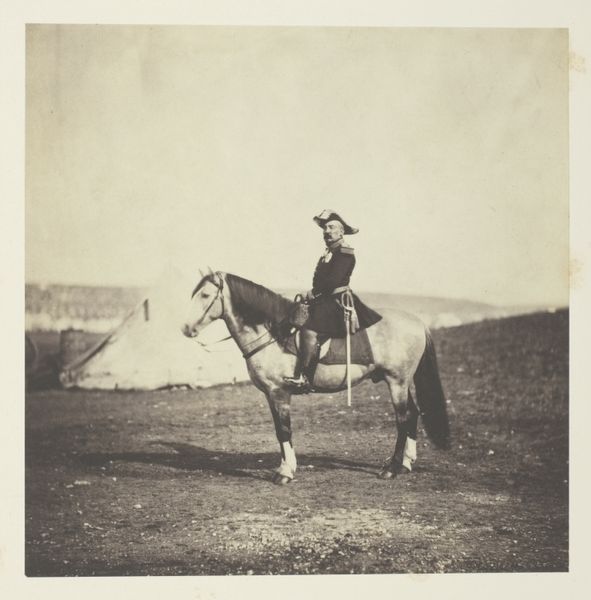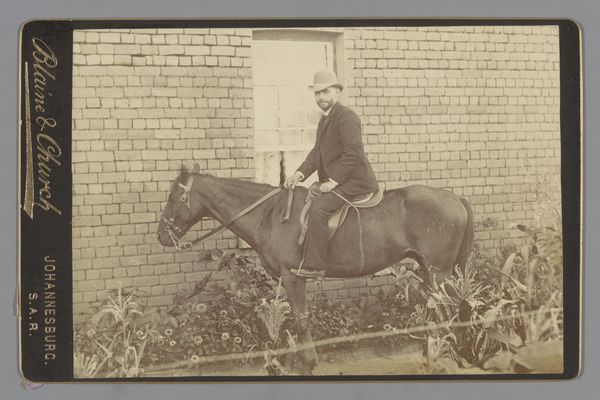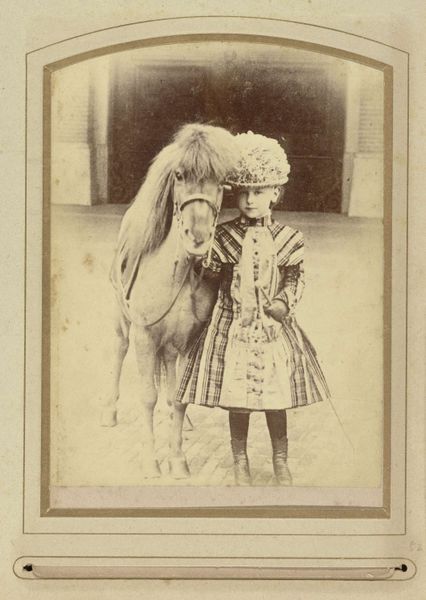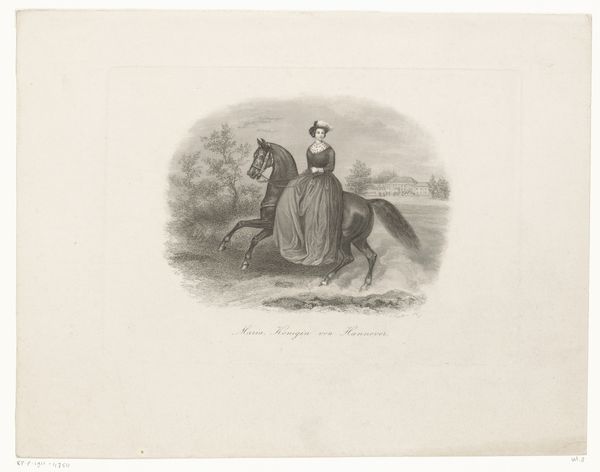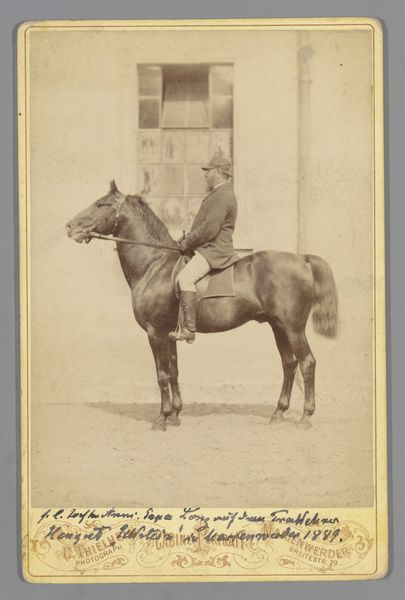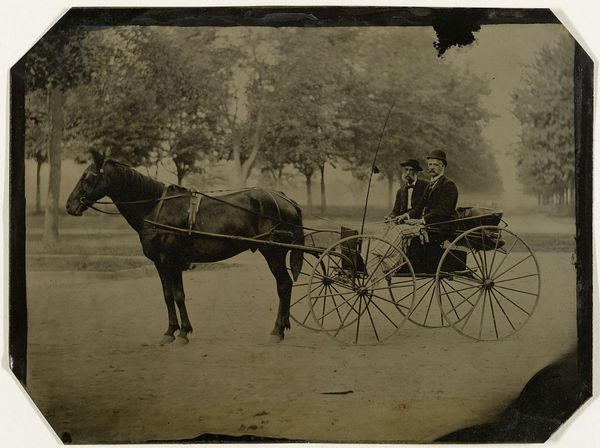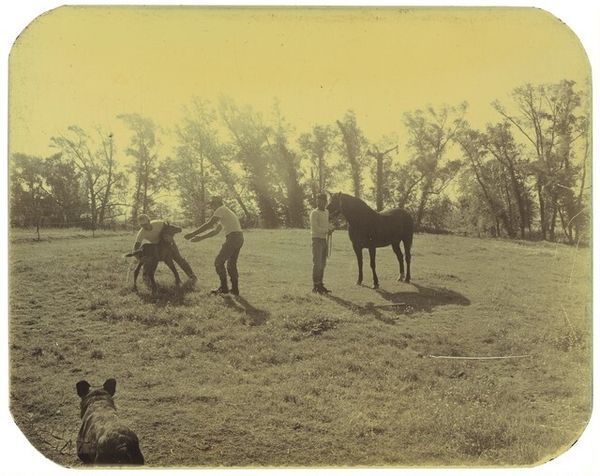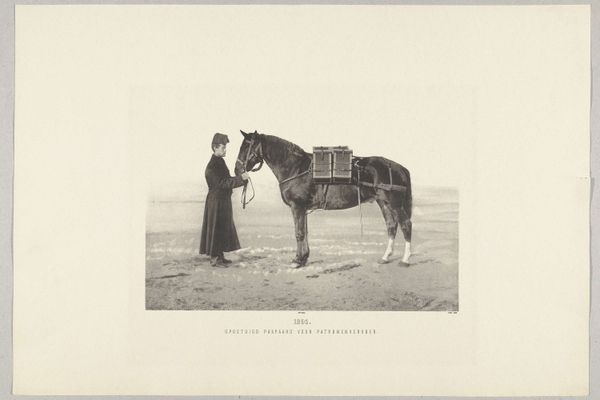![[Lady on Horseback] by Roger Fenton](/_next/image?url=https%3A%2F%2Fd2w8kbdekdi1gv.cloudfront.net%2FeyJidWNrZXQiOiAiYXJ0ZXJhLWltYWdlcy1idWNrZXQiLCAia2V5IjogImFydHdvcmtzL2Q5NzhlNzg1LWY1ZDctNDAwNy04ZjBjLWI4NDA0MzhkYTNiMy9kOTc4ZTc4NS1mNWQ3LTQwMDctOGYwYy1iODQwNDM4ZGEzYjNfZnVsbC5qcGciLCAiZWRpdHMiOiB7InJlc2l6ZSI6IHsid2lkdGgiOiAxOTIwLCAiaGVpZ2h0IjogMTkyMCwgImZpdCI6ICJpbnNpZGUifX19&w=3840&q=75)
Dimensions: 21.3 x 22.9 cm (8 3/8 x 9 in.), irregularly trimmed
Copyright: Public Domain
Curator: This is a work by Roger Fenton, an early master of photography, created in the 1850s. It’s titled "[Lady on Horseback]" and is currently held in the collection of the Metropolitan Museum of Art. Editor: It's immediately striking – the formality of the composition contrasts with the intimacy of the interaction. I mean, just look at the detail captured despite the limitations of early photographic techniques! Curator: Indeed. Fenton was part of a wave of photographers eager to test photography’s aesthetic boundaries. Think about the context: photography was still relatively new, its role in society still being defined. Editor: And yet, it's used here to reinforce a social hierarchy. We see the lady elevated on the horse, attended to by the man in the bowler hat. Who are they? What's their relationship? The image subtly underscores gender roles of the period. Curator: One can argue it romanticizes them too. Notice the almost painterly backdrop – the soft focus, the placid lake, the trees. It's a calculated image, aligning photography with traditional landscape and portrait painting. Fenton came to photography with formal training in painting. Editor: And the staging itself! The lighting, the way the horse is positioned. It's like a scene from a play. There’s this carefully constructed elegance, a quietness, but what is unsaid seems more intriguing. Is this meant to depict a partnership or reinforce a dynamic of power and servitude? Curator: Photography in the mid-19th century was also tied to ideas of realism. This work presents itself as a ‘real’ moment. That believability was a powerful tool at the time. But we can understand that it also can obscure the staged nature. Editor: Precisely. While presenting itself as documentation, it's performing ideology. Look at the length of that riding habit—restricting and cumbersome as it surely was. That's symbolic, isn't it? A physical representation of the constraints placed upon women. Curator: Thank you for raising that perspective; it provides additional depth when discussing not only artistic technique but social commentary. Editor: And looking at this piece again makes me think more deeply about the lives, now so removed, and consider more intently what they were truly like, not as staged by Fenton, but truly lived.
Comments
No comments
Be the first to comment and join the conversation on the ultimate creative platform.
